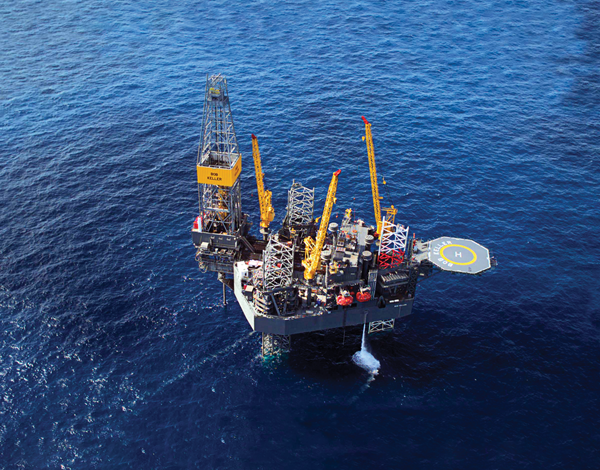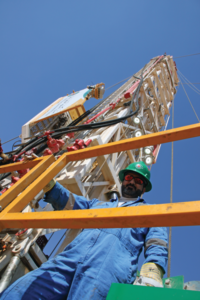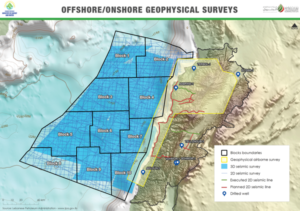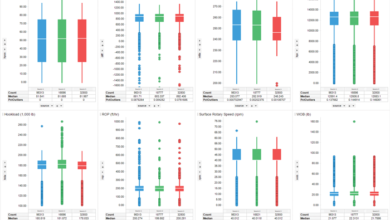Resilient Middle East holds its ground in face of low oil prices

New Saudi Aramco/Rowan JV plans to order first of 20 newbuild jackups in 2018, while PDO focuses on accelerated monetization and Lebanon pushes forward with its first offshore licensing round
By Linda Hsieh, Managing Editor
- Aramco/Rowan JV, construction of world’s largest maritime shipyard among work being driven by Saudi Vision 2030.
- Lean business efficiency program, data-driven solutions helping Petroleum Development Oman to achieve more by doing less, improve quality of wellbores.
- Large-scale gas projects in the Eastern Mediterranean continue to attract investment, but exploration successes in Egypt may create export challenges.
- Lebanon holds first offshore licensing round, believes first drilling could start by end of 2018.
The Middle East continues to defy the global oil downturn, with E&P activities sustaining at healthy levels compared with all other regions of the world. “The region has remained quite robust in terms of the drilling market. They are continuing to drill across the board,” said Jessica Brewer, Principal Analyst for Middle East Upstream Research at Wood Mackenzie. In Saudi Arabia and Kuwait, activities have even grown during the past few years. “They’re trying to take advantage of the lower cost base they’ve been able to get over the last few years,” she said.
- Noble Energy sanctions Leviathan project offshore Israel
- OPEC agrees to cut production
- Rowan Companies, Saudi Aramco form joint venture to own, operate offshore drilling rigs
- Dayrates down, but rig demand remains stable in Middle East
- Saudi Aramco, partners to develop maritime complex in Saudi Arabia
Wood Mackenzie numbers show that oil production from this region is expected to drop from last year’s 25.9 million bbl/day to 25.4 million bbl/day this year, primarily due to OPEC’s production cuts. However, total hydrocarbon production, which includes oil, gas, condensates and natural gas liquids, is forecast to rise from 41 million BOED last year to 42.3 million BOED this year.

“In terms of investment and pre-FID projects, we have seen a number of projects get the go-ahead over the last year or so, but what’s interesting for the Middle East and North Africa is these have primarily been gas projects,” Ms Brewer said. “Although oil remains important to the region, a lot of focus is also on gas development in order to meet domestic residential demand and power demands. A lot of these countries also use gas reinjection to support oil production.”
Eni’s Zohr and BP’s Atoll – both deepwater gas projects – were sanctioned for fast-track development last year, while Phase 1 of Noble Energy’s Leviathan, offshore Israel, is probably the most notable gas project to receive approval this year. Also this year, Total signed a contract with the National Iranian Oil Company for the development and production of phase 11 of South Pars, the world’s largest gas field. The project will have a production capacity of 2 billion cu ft/day or 400,000 bbl of oil equivalent per day, including condensate. “These are the kinds of projects that we’re seeing at the larger end of the scale getting the go-ahead,” Ms Brewer said. “We’re definitely keeping an eye on investments in gas.”
Saudi Arabia forges ahead
In Saudi Arabia, which has maintained some of the most stable drilling programs through the downturn and continues to keep approximately 45 offshore rigs working, activities seem almost undeterred by low oil prices. Last year, Saudi Aramco signed a landmark agreement with Rowan Companies to create a national champion for offshore drilling that would, among other things, build 20 new jackups in Saudi Arabia over the coming decade. This move wasn’t driven by the downturn but by Saudi Arabia’s Vision 2030 and Saudi Aramco’s In-Kingdom Total Value Add Program (IKTVA), said Dr Tom Burke, Rowan President and CEO. Vision 2030 is a roadmap to diversify the country’s economy and develop other sectors such as infrastructure, health and education, while IKTVA is a Saudi Aramco program to baseline, measure and support increased levels of localization. The JV between Saudi Aramco and Rowan, named ARO Drilling, will be led by CEO Kelly McHenry, who is a 27-year veteran of Rowan.

“Through ARO Drilling, Rowan is fully committed to helping Saudi Aramco achieve its objectives,” Dr Burke said. These include improved localization and Saudization of the drilling industry in Saudi Arabia; increased efficiency and quality of drilling operations through closer collaboration; and the securing of a long-term supply of fit-for-purpose jackup rigs designed specifically for Saudi Aramco’s offshore drilling needs.
For Rowan, establishing the JV represents a unique opportunity to consolidate its position in the largest jackup market in the world and to create a long-term platform for growth. “The joint venture also provides the certainty of sustained high asset utilization levels, as well as better visibility into long-term cash flows and earnings,” Dr Burke said.
Rowan will initially contribute three jackups – the Bob Keller, the Gilbert Rowe and the J.P. Bussell – to the new company, while Saudi Aramco will contribute the SAR-201 and SAR-202 jackups. “Then, in 2018, we expect to contribute the Hank Boswell and the Scooter Yeargain. On Rowan’s side, four of the contributed rigs are the same class, which has strong rationale from several perspectives, such as consumable parts, training commonality and spare equipment,” Dr Burke explained.
Five other rigs will be managed by ARO Drilling until the end of their contracts, when they will be either contributed to, leased or released by ARO Drilling: Rowan Mississippi, Arch Rowan, Charles Rowan, Bob Palmer and Rowan Middletown.
For the 20 newbuilds being planned, all construction will be carried out at a new Maritime Yard that is still under construction along the coast of Ras Al-Khair in Saudi Arabia. The yard, which is also a key component of Saudi Vision 2030, will focus on the construction, maintenance and repair of offshore drilling rigs and vessels. It also forms part of a development known as The King Salman International Complex for Maritime Industries and Services. Key participating companies in this shipyard, which is expected to be the largest in the world, are Lamprell, Hyundai Heavy Industries and Bahri, the national shipping carrier of Saudi Arabia.

ARO Drilling expects to submit the first of 20 newbuild orders to the Maritime Yard in 2018, with delivery expected as early as 2021. “ARO Drilling plans to deliver two newbuilds every year thereafter until 20 new jackups are complete,” Dr Burke said, adding that its in-Kingdom offshore workforce is estimated to grow to 2,700 people.
While the designs of the newbuilds are still to be determined, Dr Burke said they will likely be similar to designs of existing rigs that have already proven to be fit for purpose for drilling in the Arabian Gulf. “I can’t say they will necessarily all be the same, but standardization is key in the drilling business. The design philosophy is to maximize efficiency for Saudi Aramco,” he explained, noting that the ideal rig will be a high-specification jackup that will take advantage of efficiencies in drilling, pipe handling, BOP handling/testing and material handling. Further, the rig will consider life cycle cost, and key vendors will be brought in to utilize technologies in data collection, analytics and cybersecurity.
As of press time in mid-October, startup of the JV was imminent. “Starting up a business, with the integration of the systems of two different companies, is always a challenge, and we experienced some delays with certain regulatory approvals,” Dr Burke said. “However, the ARO Drilling team has been working hard preparing systems, policies, procedures and all the other things to allow the company to run smoothly. Further, Saudi Aramco, Rowan and ARO Drilling management are fully aligned. I’m confident the ARO Drilling team is ready for a smooth start-up.”
Accelerated monetization and cost reduction in Oman
Amid low oil prices, raising the bar on the quality of wells delivered has become an increasing focus for Petroleum Development Oman (PDO). The NOC operates 50 drilling units and 35 workover units, as well as 80 completion and well intervention units, accounting for a total of approximately 40 million man-hours worked per year. “Given the continued low oil price environment and the pressure to reduce expenditure whilst at the same time achieving our production targets, our strategy has been to stay the course on our main priority projects, while addressing value creation, cost control and continuous improvement in every facet of our business,” PDO Managing Director Raoul Restucci said.
PDO expects to drill approximately 650 wells by year-end, which include 25 oil and gas exploration wells. A similar number of wells is expected for 2018.
“It’s about delivering oil and gas efficiently and sustainably with a focus on accelerated monetization and cost reduction,” Mr Restucci explained. “We are simplifying all the time – doing less but achieving more.” A key enabler for PDO has been its lean business efficiency program, which has helped to reduce waste, streamline processes in areas such as well delivery, well and reservoir management, and to operate, maintain and align all “line of sight” efforts across the company.

“Our drilling teams have played a major role, delivering more wells and well interventions than ever, with reduced rig and hoist move times and enhanced planning, and all the time increasing productivity and efficiency,” Mr Restucci said. In 2016, PDO drilled 644 oil and gas production wells – 33 more than planned – and made 19,600 well interventions – a 49% increase compared with 2015, all with the same fleet. “Meanwhile, cost per meter drilled fell 8% from 2015,” he added.
“To achieve this, we have built a comprehensive program which addresses our main challenges: competency and leadership, risk management, learning from incidents and assurance,” he continued. “This program focuses on wells process safety, logistics and road safety and DROPS, as well as hand and finger injuries.”
One element of this program is the Front Line Supervisors (FLS) HSE Leadership initiative, which started last year. This coaching module increases supervisors’ knowledge about how to promote safe behavior in the workplace. “We have seen a step-change in HSE performance on those units that have FLS leaders.”
A focus on introducing new technologies is also under way, as is a new rig contracting strategy that aims to bundle all services required for the development of a specific field under one umbrella to offer an integrated work scope to bidders.
PDO is further looking to data-driven solutions for additional improvements, by defining the gap to potential, or gap to best in class, for every activity in drilling and production. The company has been using dashboards that allow for a better understanding of its performance in order to drive progress and best practices. “We have also been engaging with a number of leading service providers and IT companies on technology and software that could make a tangible difference to the way we operate thousands of wells and processes,” Mr Restucci said.

“It’s about moving from lagging indicators to leading indicators to predictive indicators, whether it is running a compressor, a beam pump optimization or exception-based surveillance on steroids,” he continued. “There is enormous opportunity. New technology, big data and digitization are going to play a huge role in our future, allowing us to explore and produce hydrocarbons more safely, efficiently and responsibly.”
There’s also been a shift in mindset across the organization to significantly improve capital efficiency and deliver competitive projects. “We have challenged standards and legacy practices, opting for simpler, standardized ones, reduced working capital, and maximized net cash to shareholders while ensuring our reserves and contingent resource replacement ratios remain well above one,” Mr Restucci said.
Where possible, PDO is pursuing early monetization of prospects. “Our Exploration Directorate has effectively recovered all costs within the same calendar year because of the focus on early hook-up and exploration where production ullage is readily available,” he explained.
For 2017, PDO’s average oil production has been approximately 579,000 bbl/day, down from 600,197 bbl/day in 2016. Mr Restucci attributed that decline to reduced government targets resulting from OPEC production cuts and noted that the company is capable of ramping up its long-term production plateau to at least 650,000 bbl/day in the next three years.
Gas production currently remains at around 83 million cu m/day. PDO’s first megaproject, Rabab Harweel, is set for first gas export in 2017. The complex comprises the installation of sour gas processing facilities and associated gathering, injection systems and export pipelines. “It paves the way for the export of 1 trillion cu ft of non-associated sale gas, as well as 240 million bbl of oil and 100 million bbl of condensate,” according to Mr Restucci. The NOC’s second mega-project, Yibal Khuff, is also on target for completion in 2020.
Notable gas exploration projects under way include phase 3 of Mabrouk, which will come onstream next year; Tayseer, with the early development facility onstream in 2019; and the Khulud tight-gas project due in Q4 2019. The company is also advancing low unit technical cost developments, such as Mashari (onstream this year), Mabrouk North East (2018), Tawf Dahm (2020) and Burhaan North (2023).
PDO is even increasing its focus on renewables. Its Miraah solar energy project at Amal in Southern Oman is set to produce its first steam “any day now,” Mr Restucci said. Miraah will be a 1,021-megawatt solar thermal facility, producing steam that will be used in thermal enhanced oil recovery to extract heavy and viscous oil at the Amal oilfield. It’s expected that, once complete, Miraah will save 5.6 trillion BTUs of natural gas each year.
Growth of the Eastern Mediterranean
The Egyptian Revolution of 2011 significantly changed the dynamics of gas markets in the East Mediterranean. In 2016, Egypt went from being the world’s eighth-largest LNG exporter to the world’s eighth-largest LNG importer over the space of a few years, according to Bas Percival, Senior Analyst – Middle East and North African Upstream for Wood Mackenzie. A lack of investment in Egypt and a steep increase in demand in the country were both factors in this dramatic shift.
For a number of gas discoveries that have been made in the Eastern Mediterranean in recent years, particularly those in the gas-rich Levant Basin, Egypt was seen as a major export market. “Now, the exploration success on the Egyptian side is throwing all that off course,” Mr Percival said. “Zohr, for example, just kind of changed the game completely.” The Eni-operated Zohr field, discovered in 2015, is one of the biggest gas discoveries in the Mediterranean, with an estimated 30 trillion cu ft of gas in place.
Nooros, another Egyptian discovery made by Eni in July 2015, was tied into the domestic grid within months. “First they were getting about 500 million to 600 million cu ft a day,” he said. “That ramped up really quickly to over 900 million cu ft a day, maybe even higher. That just shows you Egypt’s had that real turnaround.”
What this means for other sources of gas in the Eastern Mediterranean is they’re going to face greater monetization challenges. “It’s not completely closed that window of opportunity, but it’s definitely put a risk on it,” he said of the impact of Egypt’s exploration successes. “For example, for Leviathan, we still assume that for phase 2 to come onstream, they’re going to need to send that to Egypt, but we’ve also started looking at Europe and Turkey as alternative markets for Eastern Mediterranean gas.”
Lebanon is now also getting into the game, as it closed the submission of bids for its first offshore licensing round on 12 October. The licensing round was initially launched back in May 2013, but political shifts in the country caused multiple delays over the years. It wasn’t until late 2016 and early 2017, with the election of a new president and the subsequent formation of a new government, that the wheels began turning again.
“This has been a big catalyst for all pending projects, including the licensing round, to kickstart again,” said Wissam Chbat, Chairman of the Board and Head of the Geology and Geophysics Department for the Lebanese Petroleum Administration (LPA). On the first session of the new government in January 2017, the pending decrees – regarding the offshore blocks map and the model E&P agreement – were ratified. A taxation law for oil and gas activities – the final roadblock for proceeding with the licensing round – was ratified on 12 September.
While the country appears confident in the hydrocarbon potential of its acreage, backed by existing nearby discoveries in the southern part of the Levant Basin, Lebanon has also incorporated various financial incentives to attract investors. The draft taxation law, for example, called for a 20% income tax on petroleum operations. Further, royalty for gas projects has been capped at a flat 4%, and signature and production bonuses have been eliminated, according to Mr Chbat.
A total of 10 offshore blocks have been mapped out within the Lebanese Exclusive Economic Zone (EEZ). Five of them – Blocks 1, 4, 8, 9 and 10 – were opened for bidding, and four blocks are expected to be awarded in this round. Blocks 8, 9 and 10, however, lie in an area of unresolved border dispute with Israel, which Lebanon doesn’t recognize as a sovereign state. Whether this dispute will keep major oil companies from bidding on these blocks was unclear as of early October, but Mr Chbat said he doesn’t believe it will be a major factor in companies’ decisions to invest. “As a government institution, we don’t see the disputed zone… but it’s to the benefit of every party to keep these things under control because if things escalate then this will be a no-go for the investors,” he said.
A more important consideration, Mr Chbat continued, is Lebanon’s access to infrastructure and markets, which are critical to monetizing any gas finds. He estimated Lebanon’s domestic energy demand will increase to just 350 million to 400 million cu ft a year by 2030, so any discoveries would have to be exported.
“Lebanon benefits from a good network in all directions to be able to export this gas, either through Turkey to Europe or through Syria to Egypt, or maybe by sea pipeline to Cyprus or Egypt,” he said. The country could also tap into Egyptian infrastructure if it establishes itself as a gas hub in the Eastern Mediterranean, or perhaps Cyprus will have developed its own infrastructure by the time Lebanon has a commercial discovery. “We could benefit from the common infrastructure that would be in place to reduce development costs.”
Looking toward the coming months as the LPA evaluates the bids and signs its first contracts, Mr Chbat said his organization will strive for clarity and transparency, as well as quick decision making, throughout the process. Earlier this year, for example, the Lebanese government announced its intention to join the Extractive Industries Transparency Initiative, a global standard to promote the open and accountable management of oil, gas and mineral resources.
“If you analyze the system in Lebanon and you see what is in place, I think you will be surprised that even before any drilling has taken place, we are in a very good position when it comes to regulations and governance as a whole,” Mr Chbat said. “We might find some gaps when we execute these regulations, mostly around HSE regulations, but we are already working to improve that. We also recognize that when it comes to the day-to-day operations, some decisions need to be taken in a faster way, so we are devising a new procedure and process to have the LPA be a one-stop shop so a company doesn’t have to go to several entities to get a permit.”
With drilling rigs readily available in today’s oversupplied market, coupled with the fact that multi-client 3D seismic data have been available for most of offshore Lebanon for years, Mr Chbat said he believes that companies are ready and primed to drill. “I would say towards the end of 2018 we could witness the first drilling offshore Lebanon.” DC
DC Editorial Coordinator Eva Vigh contributed to this article.






